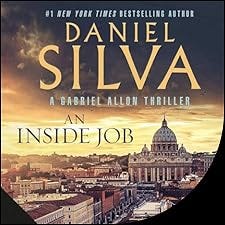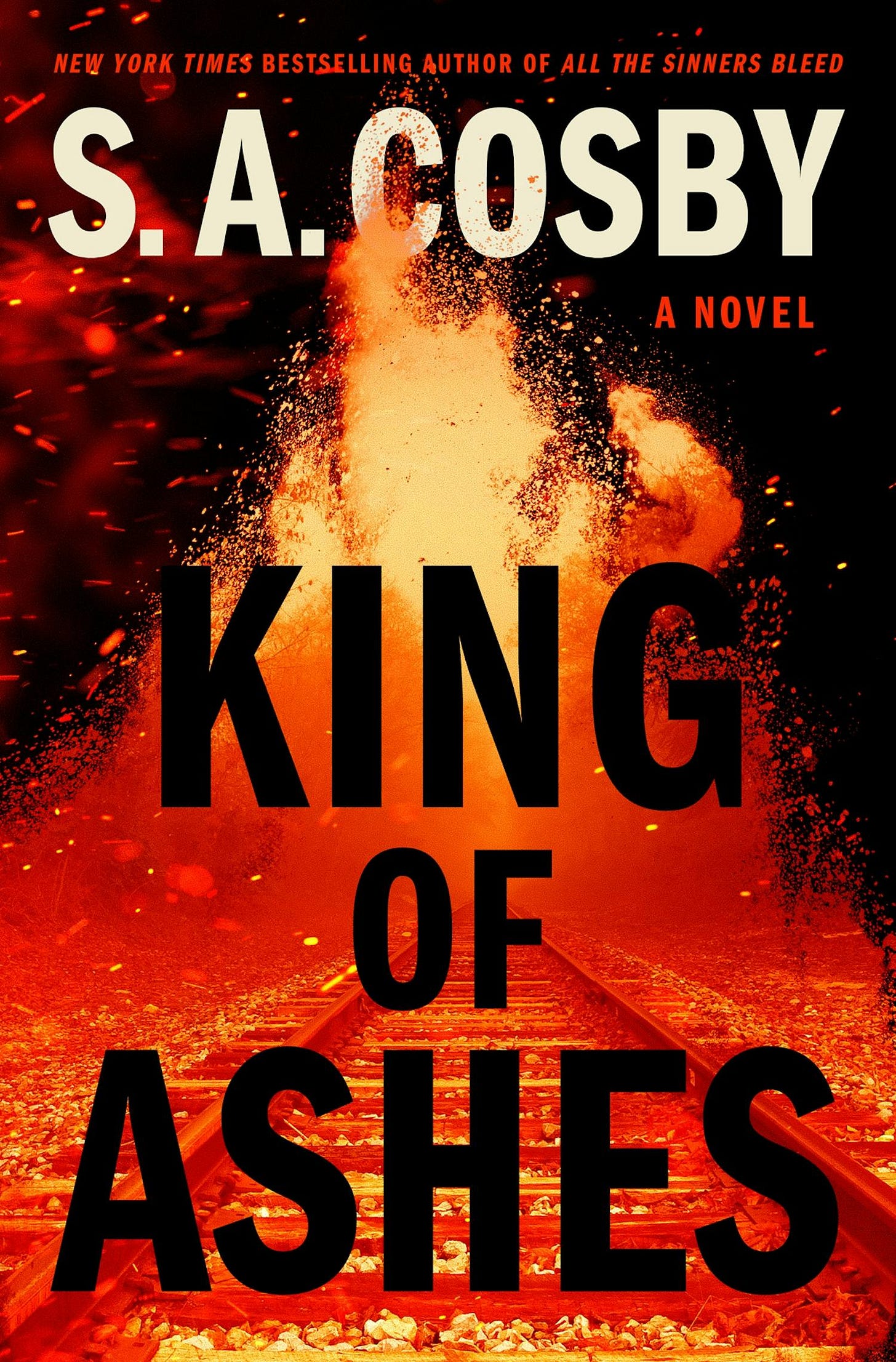Finding the Ending: Not a How-To
Guest-poster Deborah L Williams helps us think about bows, piles, circles, and the trickiness of audience expectations
From Andromeda: Thanks to Deborah for launching us on what will be a multi-post conversation about endings, and what makes a good one! Thanks also to the many readers who answered our survey. Your answers were so helpful (and often, quite surprising.) The #1 thing you want, by far, is craft of writing posts. And what a coincidence, because we have a new one for you, today.
I just finished reading An Inside Job, the twenty-fifth book in the spy/thriller series by Daniel Silva, which features Gabriel Allon, the Israeli-trained super-spy who is also a master art restorer specializing in Renaissance art. Believable? Not really. Enjoyable? Absolutely. Over the course of the series, we learn about Allon’s painful backstory, his involvement with Mossad, and, later, his love affair and eventual marriage to the daughter of Venice’s rabbi. The intrigue varies from book to book, but almost always involves high-flying criminals, international secrets, exotic locales, and a gallery of recurring characters. And—spoiler—Allon almost always wins. I say “almost” because sometimes that victory comes at a cost, maybe not to Allon himself but to someone in his circle.
What keeps me reading, through twenty-five books, given that I know the ending? It’s the same reason I watched all fourteen seasons (!) of the British detective show “Vera,” adapted from Ann Cleeves’ Vera Stanhope novels. The show stars the inimitable Brenda Blethyn as curmudgeonly detective Vera Stanhope, a sort of Northumberland version of Columbo, right down to the battered raincoat. “Vera” is a police procedural, not a thriller, with one crime and its complications taking an entire season to solve. Because each season starts with the discovery of a dead body, we always know what the crime is; the puzzle is whodunnit—and, spoiler again, Vera and her team always find the culprit.

The satisfaction of these tidily solved series might be the same satisfaction that arises from watching a “Mission: Impossible” movie: we know that even if Tom Cruise is hanging from the rotor of a helicopter by his teeth, he’s not going to die. And we know that because of our familiarity with the genre of Tom Cruise movies. Whether consciously or not, that familiarity –which German literary theorist Hans Jauss called “the horizon of expectations”—shapes how we respond to what we read and watch.

What does all of this mean for those of us trying to write an ending to a novel? How do we wrangle with our own horizons of expectation, as well as navigate what we think readers might want (or expect, or accept)? How do we create endings that ring true to the story we’re trying to tell, and does that always mean ending our thriller or mystery in a neat and tidy package, with the baddies being punished and the goodies getting to have a nice cuppa by the fire?
A writing-group friend of mine suggested that one reason a tidy ending brings such pleasure is because that tidiness so seldom happens in real life. In real life, as we are all too well aware, the baddies often get away with all their bad things. Real life, it seems, has a more literary sensibility, in which crimes and misdemeanors often go unpunished and ambiguity rules the day.
It may be, in fact, that we choose what to read next in part because we’re in need of one kind of ending over another. Novels that hew closely to genre conventions, a category in which I’d also add Louise Penny’s Inspector Gamache books and Donna Leon’s mysteries featuring Commissario Brunetti, as well as some of the novels by Ruth Ware, give us endings in which the threads are pulled together if not into a bow, then at least into a nice pile. When the novels end, we are more or less back where we began.
But in novels that play more with genre convention and skew “literary,” like Tana French’s novels, or those S.A. Crosby, the endings do something different. They may resolve, but not neatly. These novels execute what I think of as a spiral: they return, in some fashion, to where they began, but with a change. Crosby’s latest novel King of Ashes does this beautifully: at the beginning we see the main character, Ray Carruthers, in his affluent life in Atlanta and then he is called home to deal with a family crisis, gangsters, and long-buried secrets. At the novel’s end . . . I won’t spoil it other than to say that the novel concludes with a version of the beginning. The ending both satisfied and surprised me, and was in fact all the more satisfying because the surprise was completely supported by what had ensued in the course of the novel.
As I was thinking about the difficulty of endings, I re-read the ending of Ruth Ware’s The Woman in Cabin 10—and the fact that I had to re-read it, even though I only read the novel last month—should tell you something. I’m sure some readers will disagree with me, but that ending seemed tacked on, almost as if Ware had suddenly remembered that she’d left a plot line dangling.
To be a writer is to willingly entertain—even to invite—friction into one’s life. Isn’t writing simply the process of rendering that friction, whatever its causes, intelligible for others?
So. An ending. What kind of ending do you appreciate as a reader? What endings do you remember, and why? Was it the beauty? The surprise? The sense of a perfect click as the ending slid into the story like a key turning into a lock?
I end with the belief that endings are as idiosyncratic as readers. The ending that makes the writer cackle out loud with satisfaction, might make the reader want to hurl the book across the room in frustration, maybe because you’ve dashed their expectations. That might have been what Ruth Ware wanted to do in Cabin 10, but because the rest of the novel so tightly fit the locked-room mystery (albeit on a boat), the ending didn’t feel earned. Whereas in The Buffalo Hunter Hunter, by Stephen Graham Jones, the ambiguity and surprise of the ending was absolutely in keeping with a novel that smashes together the genres of horror, historical fiction, and suspense into a terrifying story about the treatment of Native Americans in the late 1800s. The ending was deft, chilling example of returning to the beginning but with a change.
In the acknowledgements to that novel, Jones thanks the friends who helped him understand why various elements of the book weren’t working—including the frame narrative, with which the novel concludes. In other words: he didn’t come to his fabulous ending alone. You probably won’t either. Try on a few different endings for size; see what fits, what clicks in the lock of the novel, what makes you cackle. Just like we know that Gabriel Allon and Vera Stanhope will always get the baddies, you will find your ending. It’s just a question of how.
Deborah Lindsay Williams is the author of The Necessity of Young Adult Fiction and a professor at NYU. Her essays and interviews have appeared in The Rumpus, The New York Times, Jane Friedman’s blog, The Markaz Review, and Lit Hub, among others. She writes a monthly book review Substack, “As One Does. . . “ Other writing can be found at https://mannahattamamma.net/. She is currently at work on a novel about a middle-aged librarian who finds herself in the middle of a centuries-old struggle between witches and the men who want to kill them. And yes, she’s figured out how the novel ends.
Hey, suspense fiction enthusiast! This is just the kind of crafty guest post we love to receive. Would you like to contribute? Let us know.




Loved this!
Thanks for pointing out types of endings. A good ending makes all the difference, and sometimes I struggle with ending a crime story. With a series protagonist it's a bit more complicated, because I can't let him die, and I can't put him through too much change.